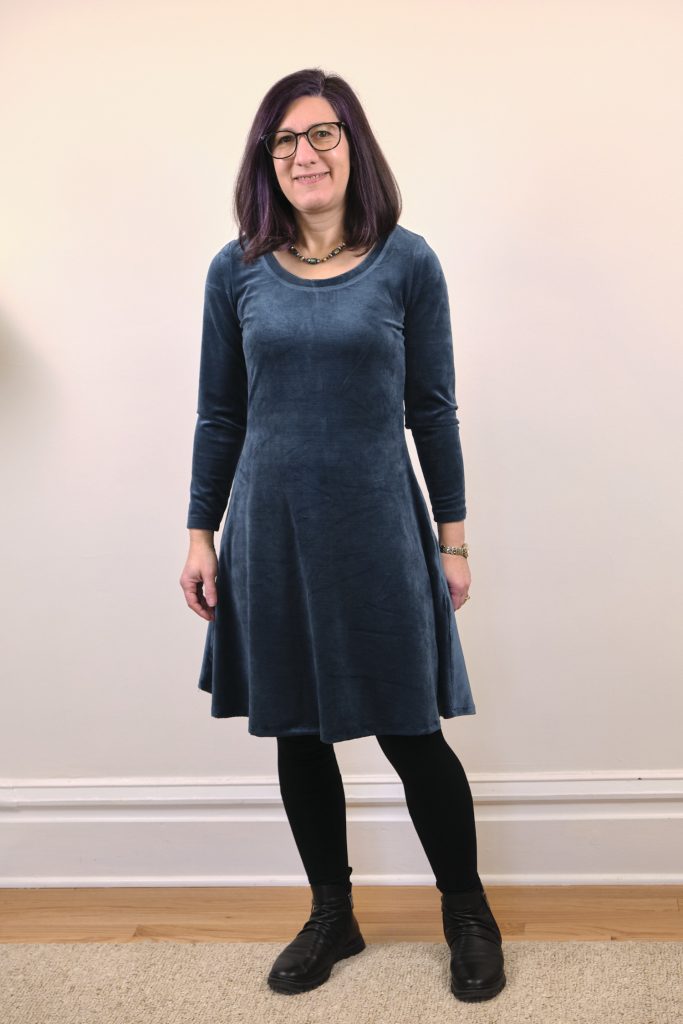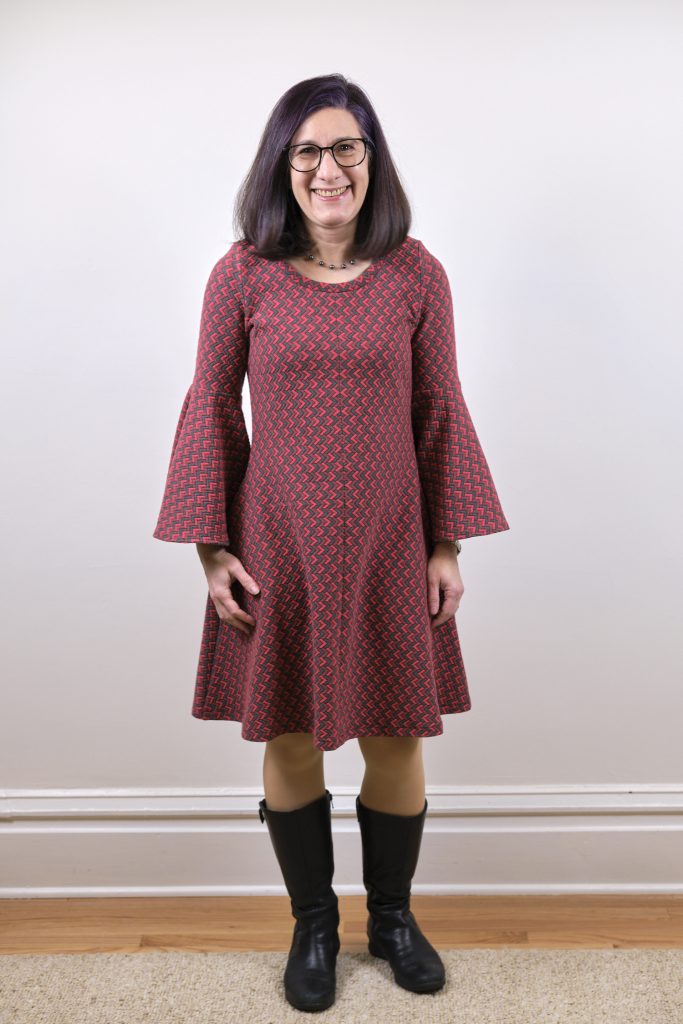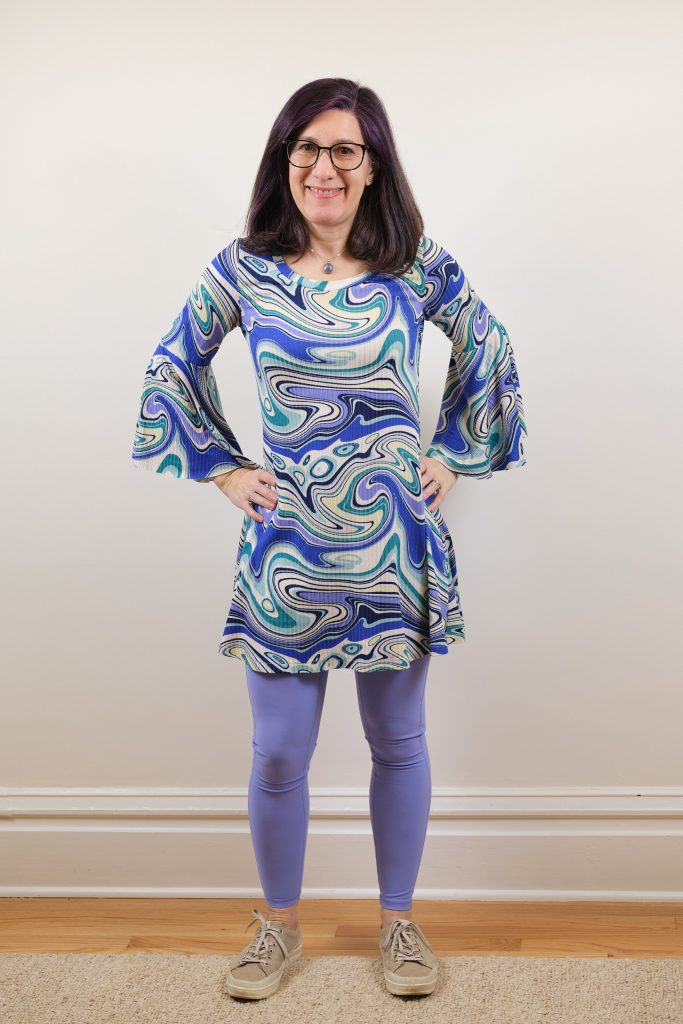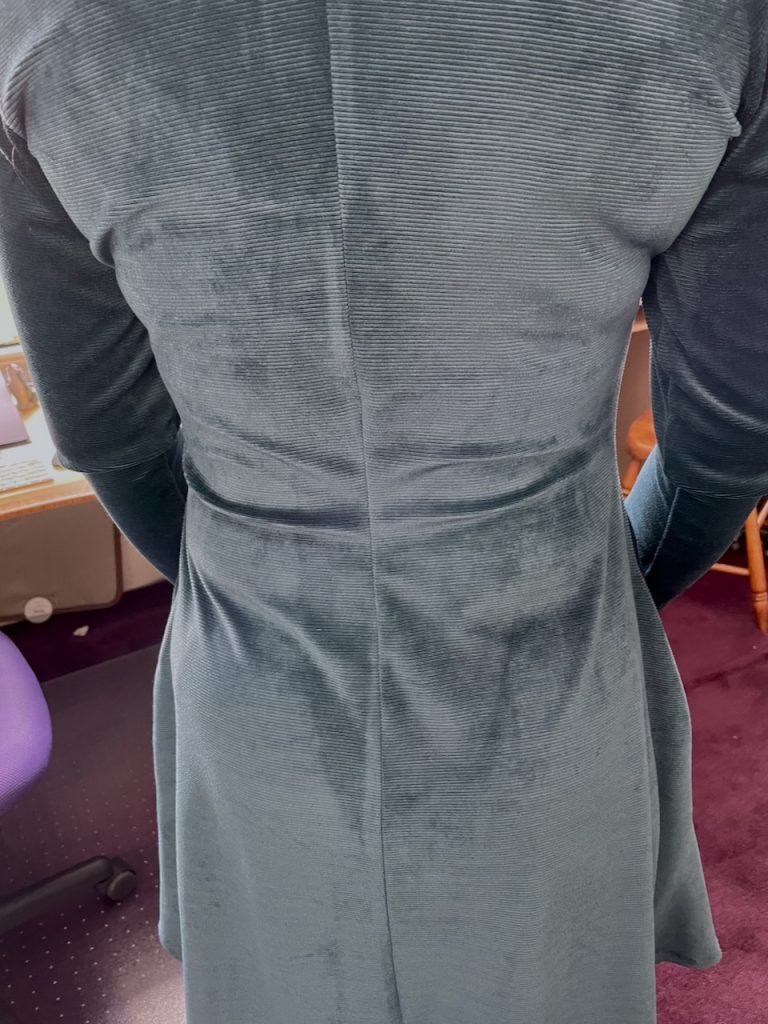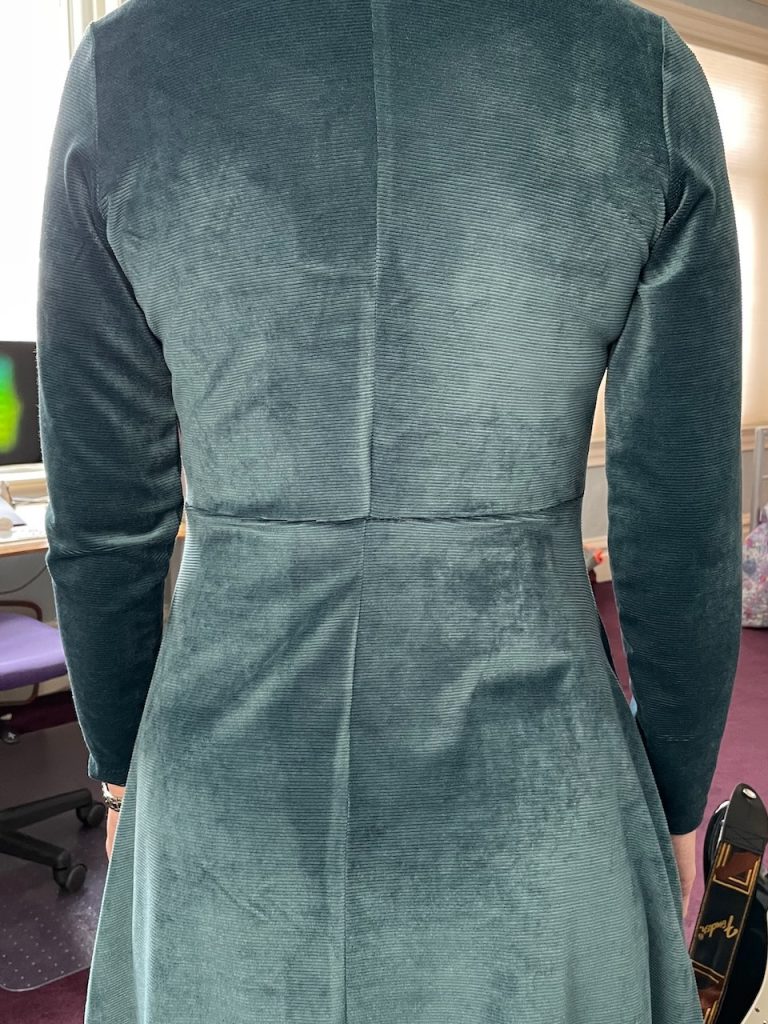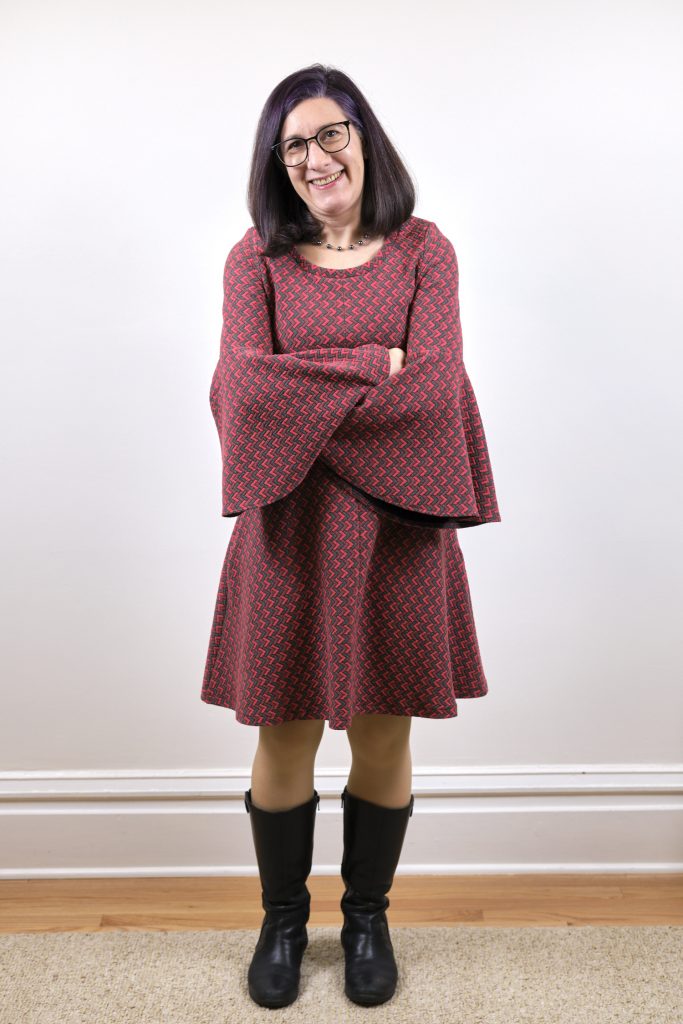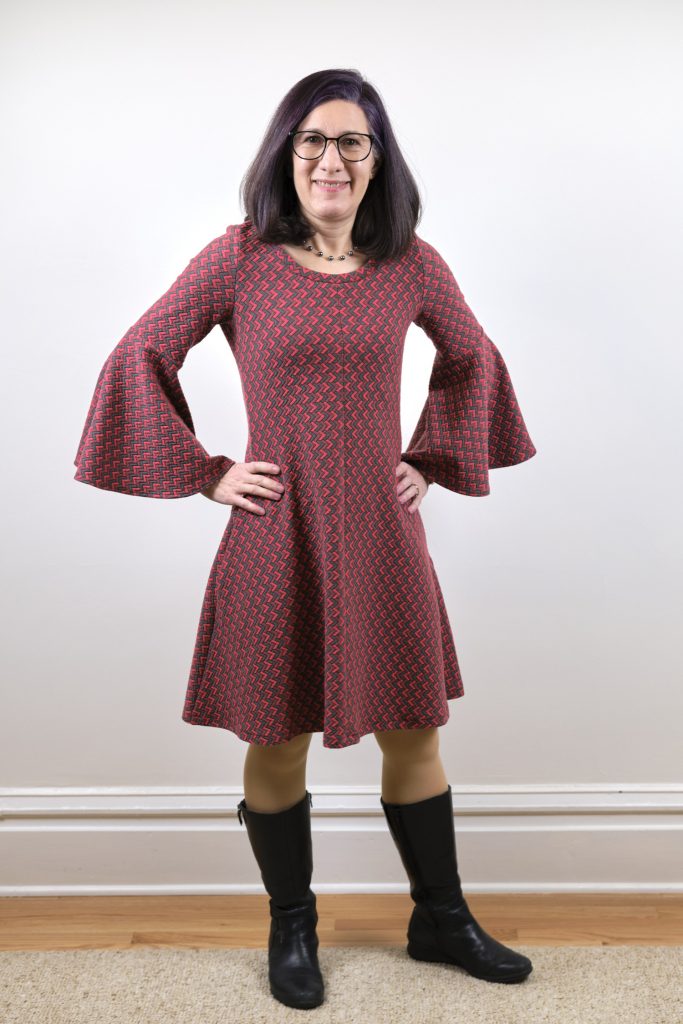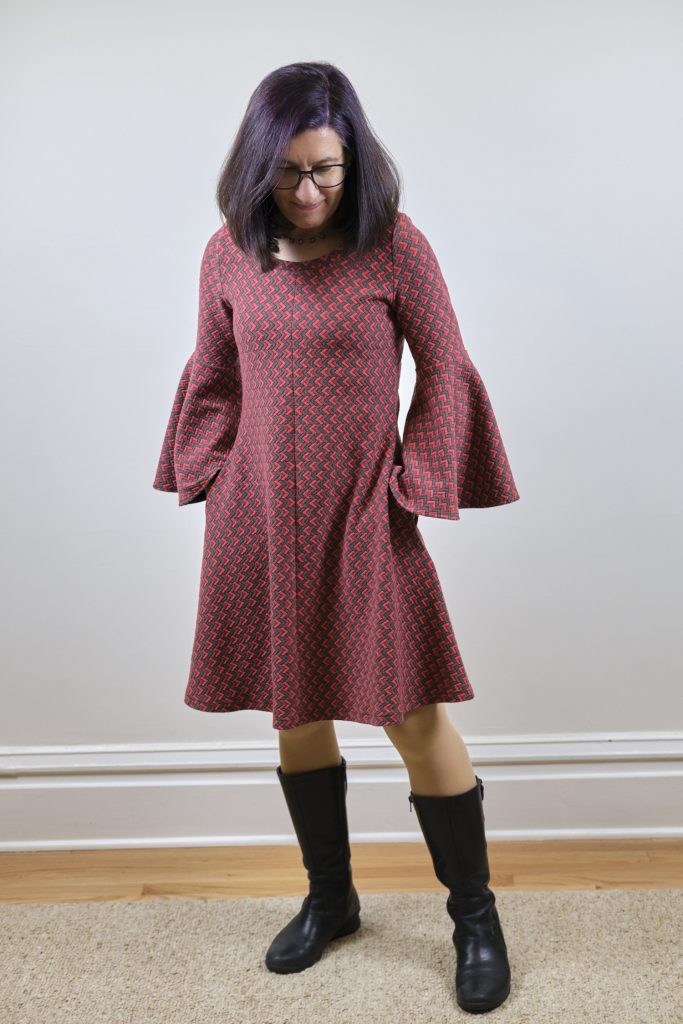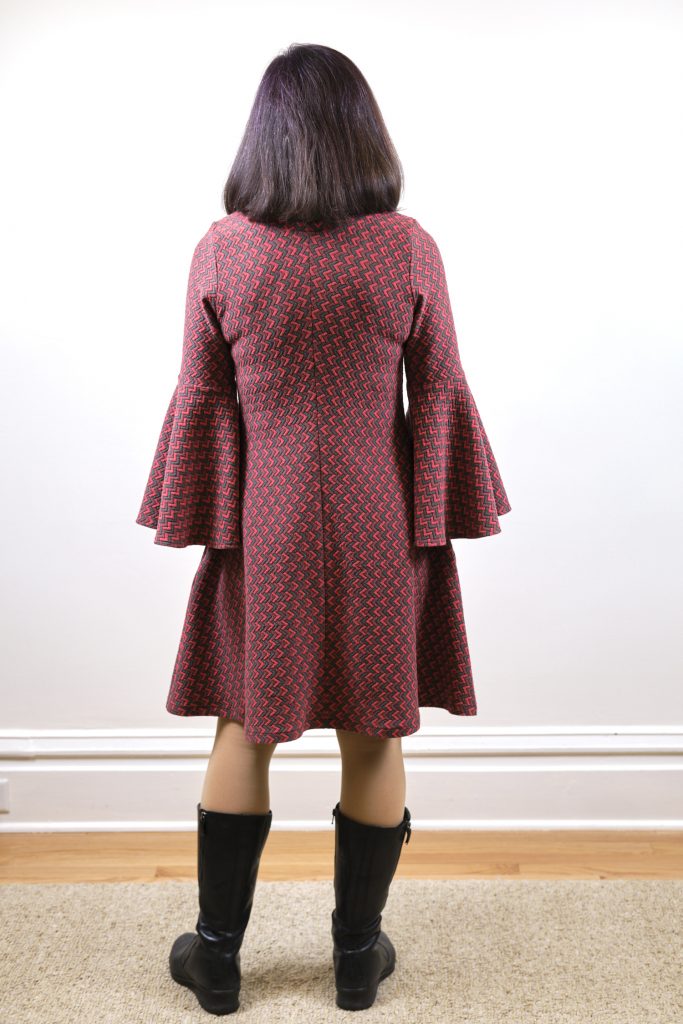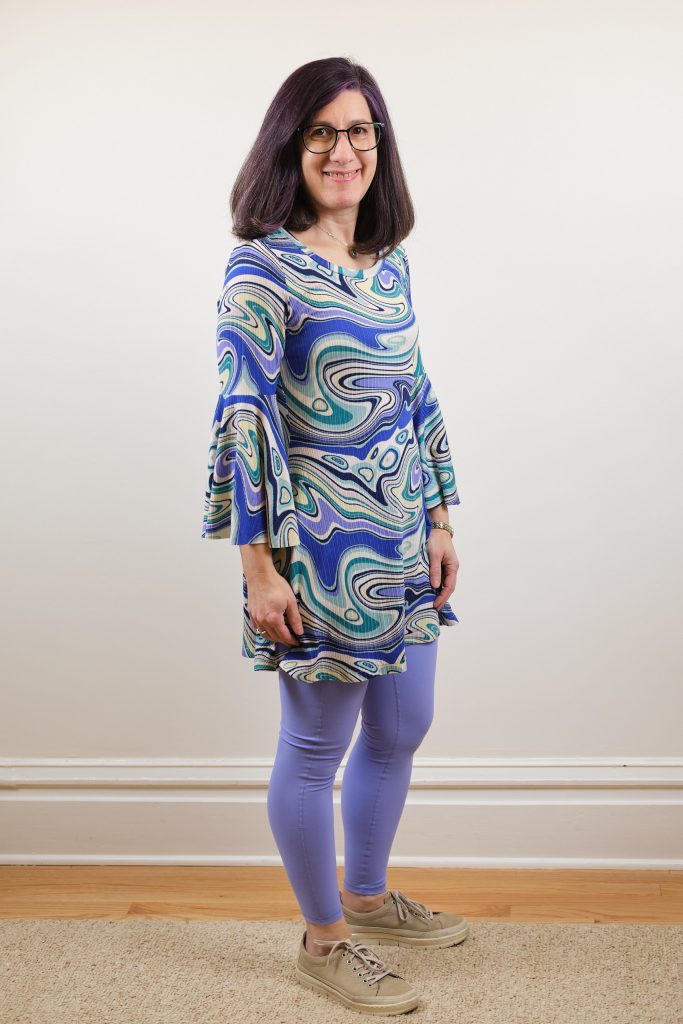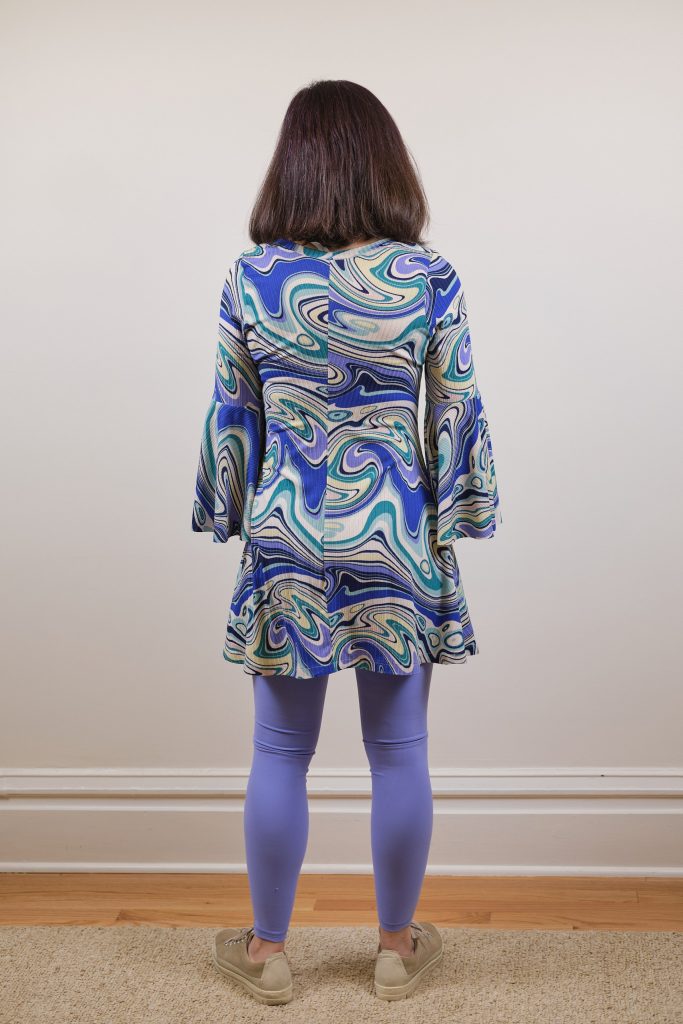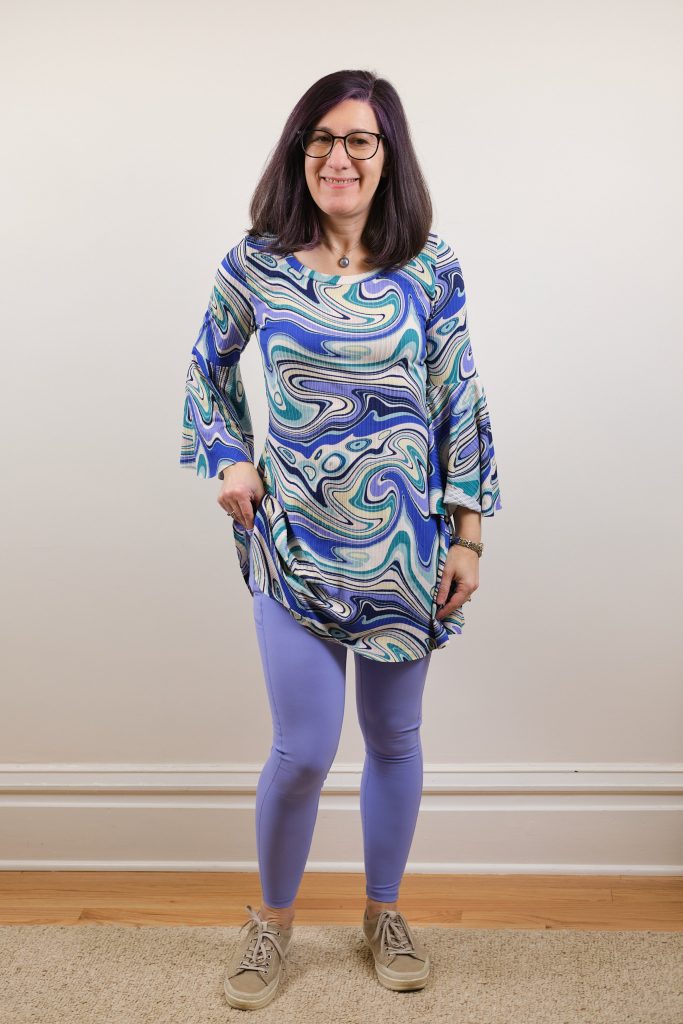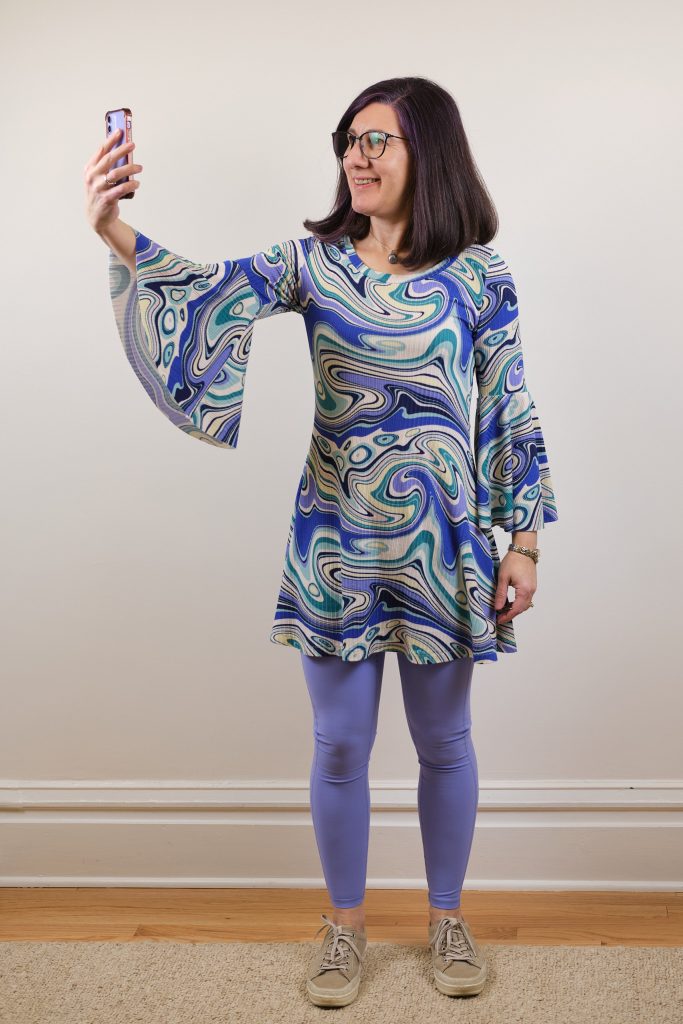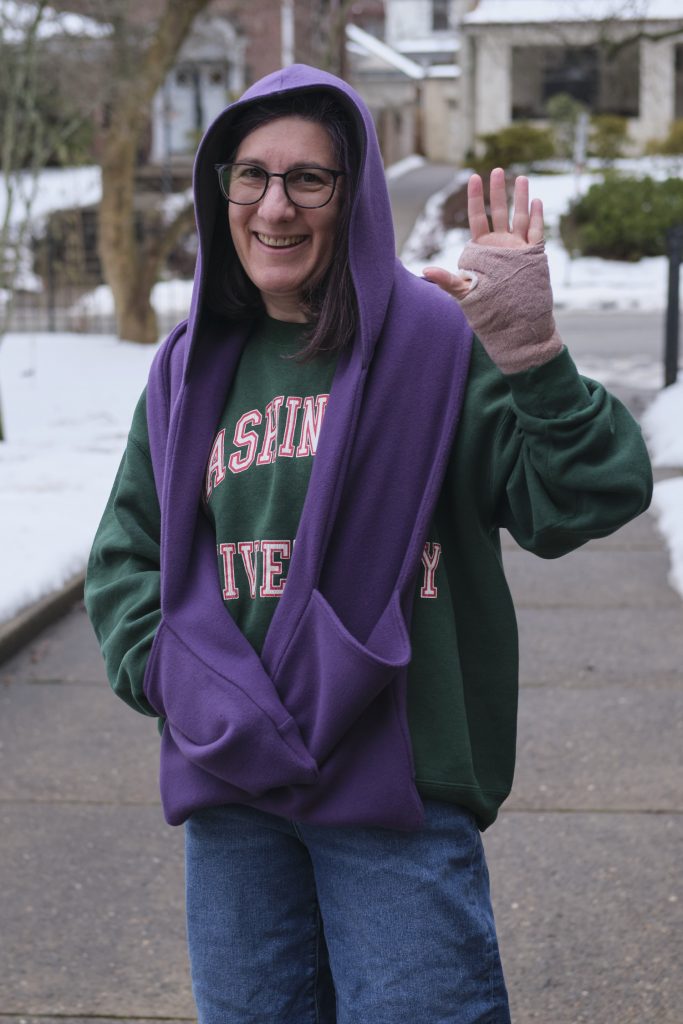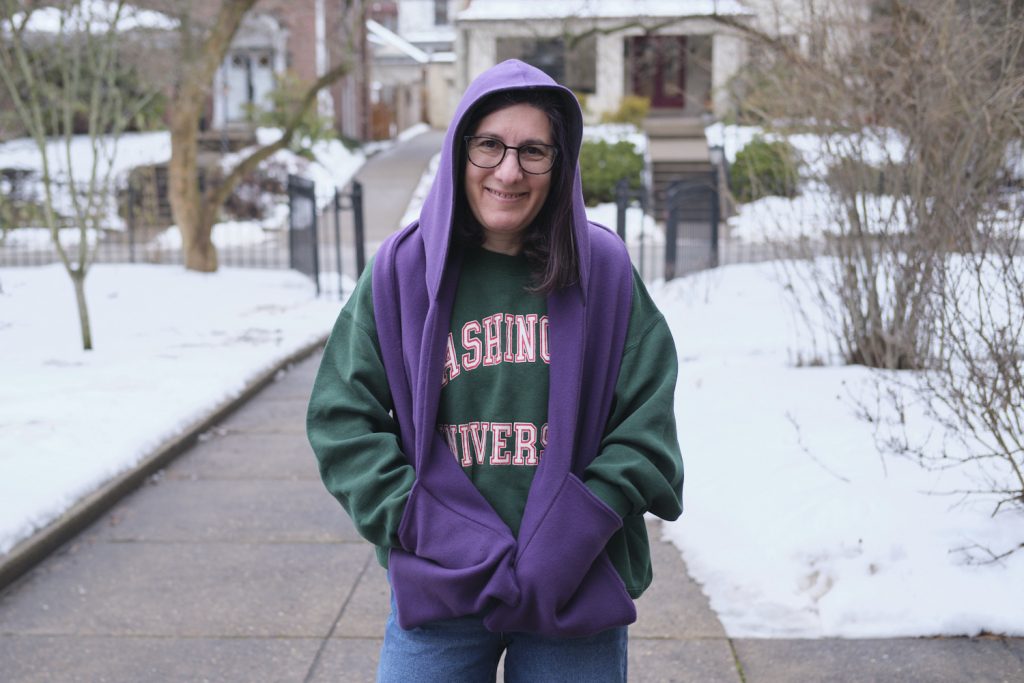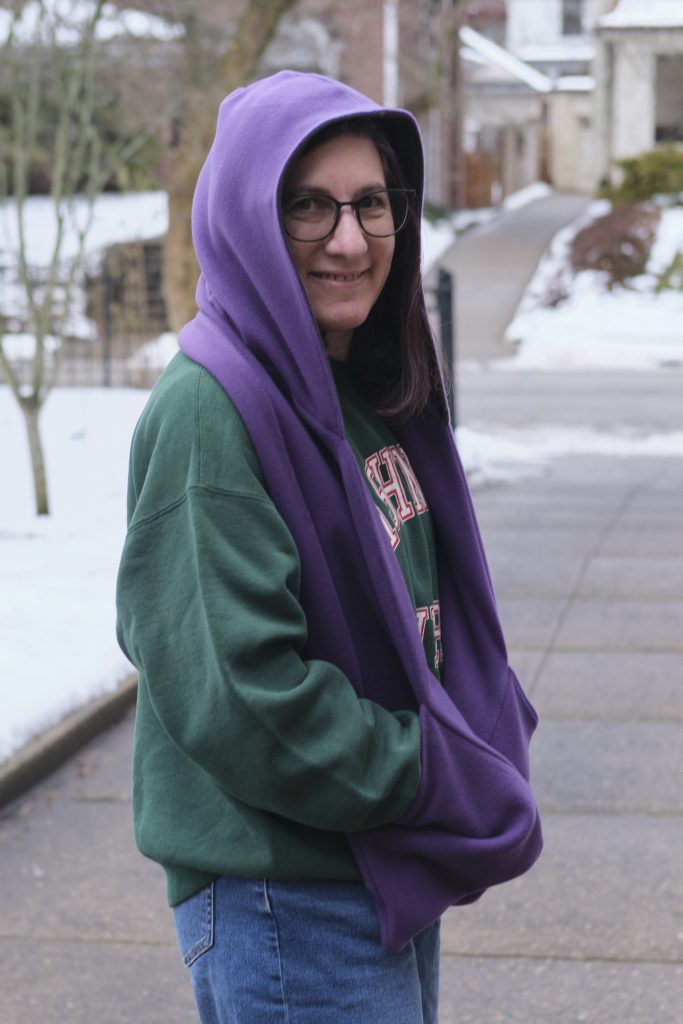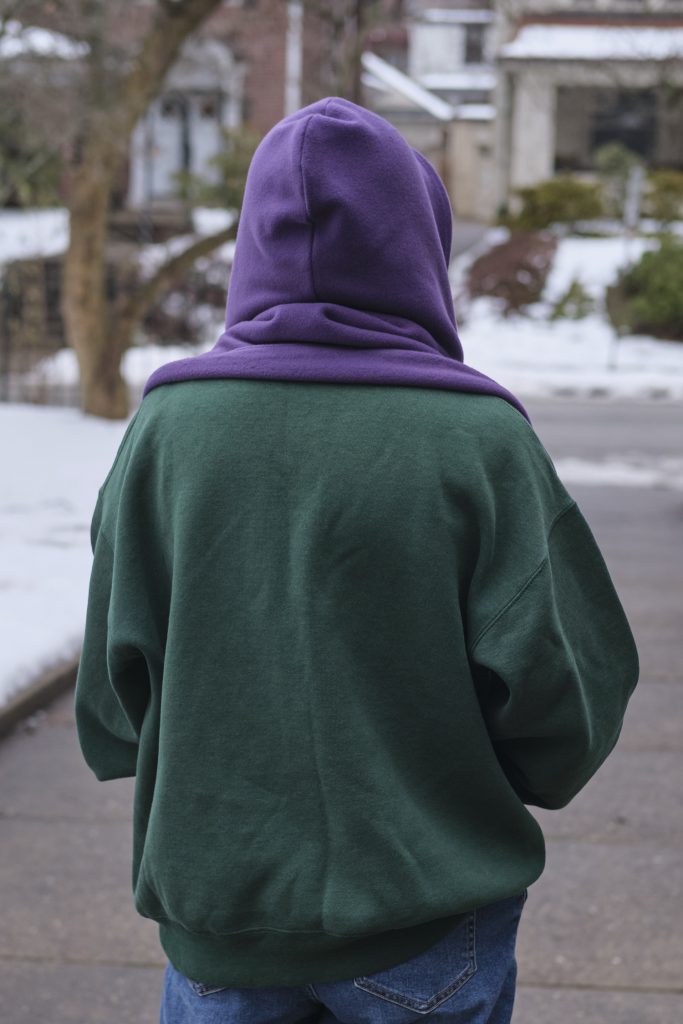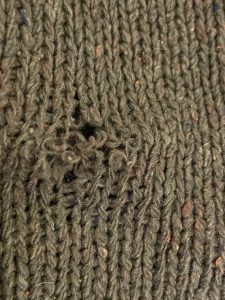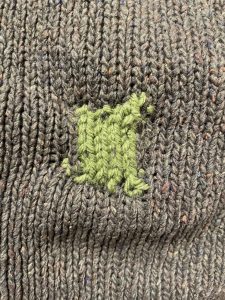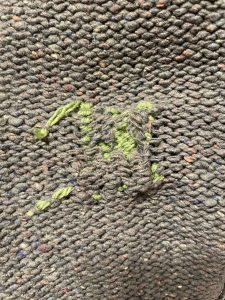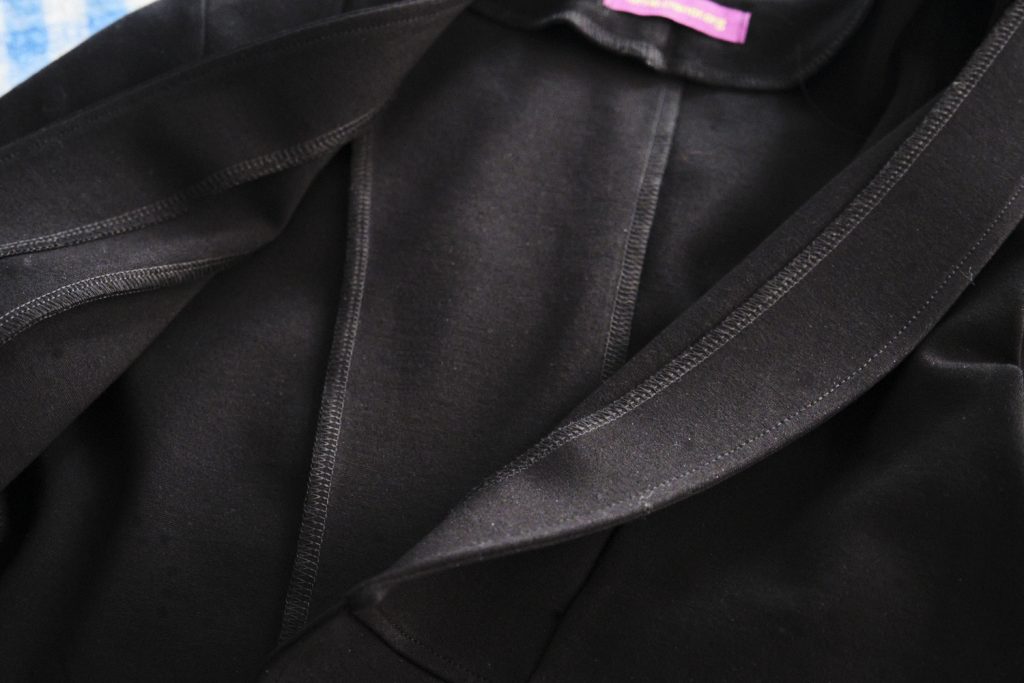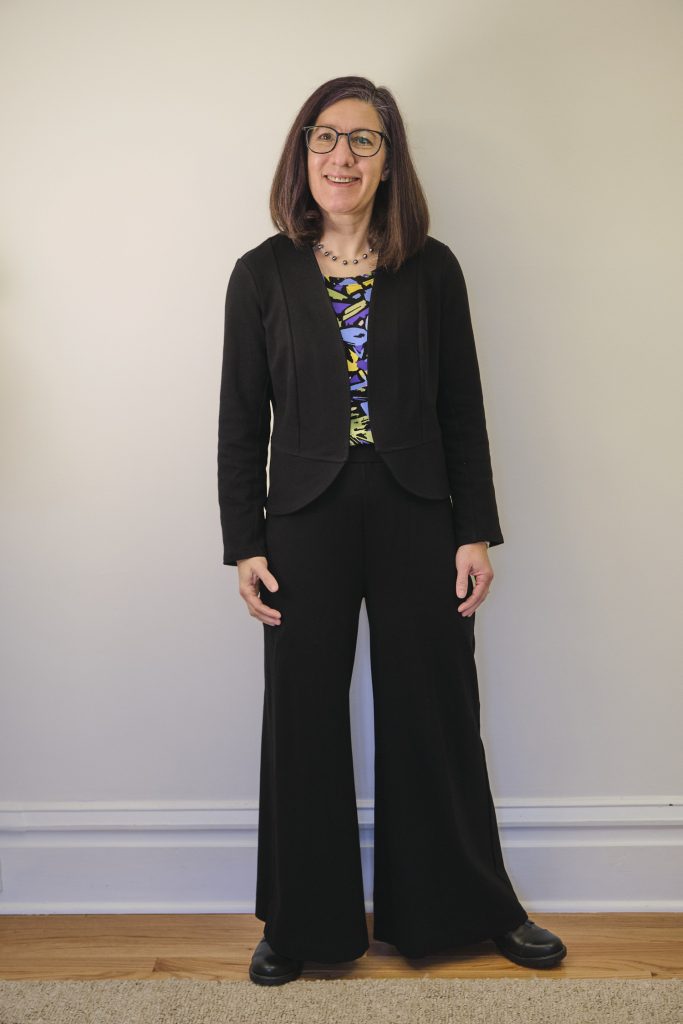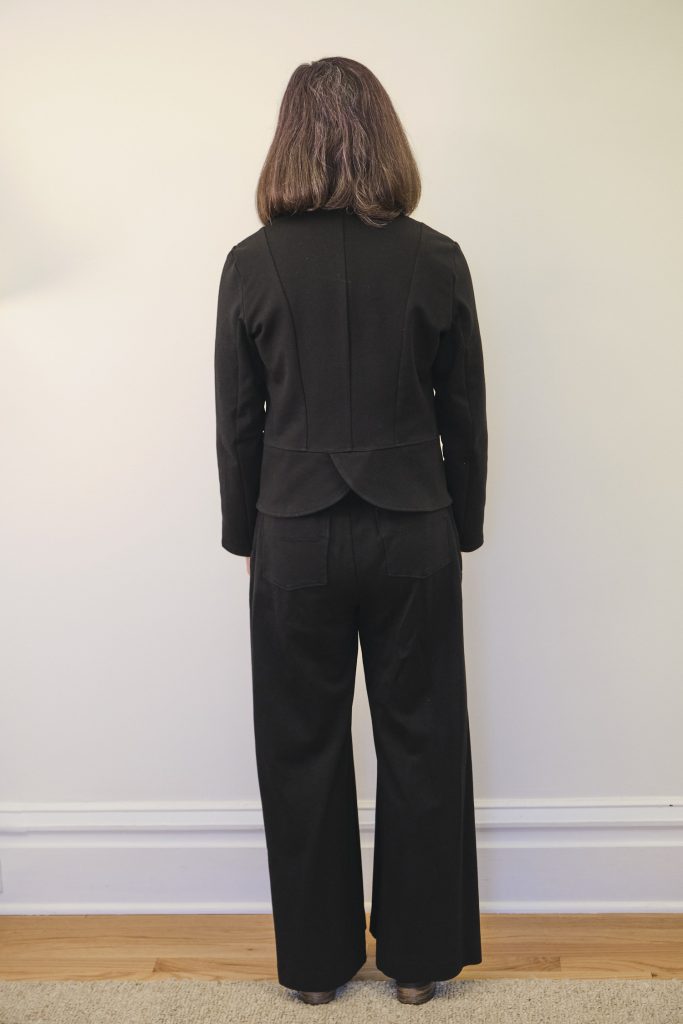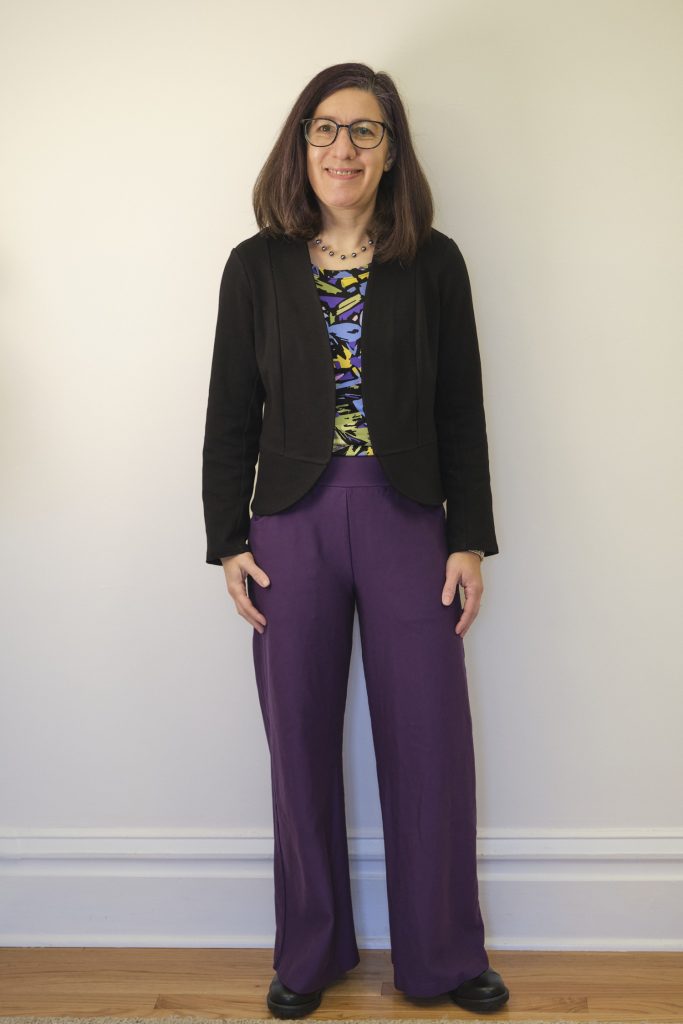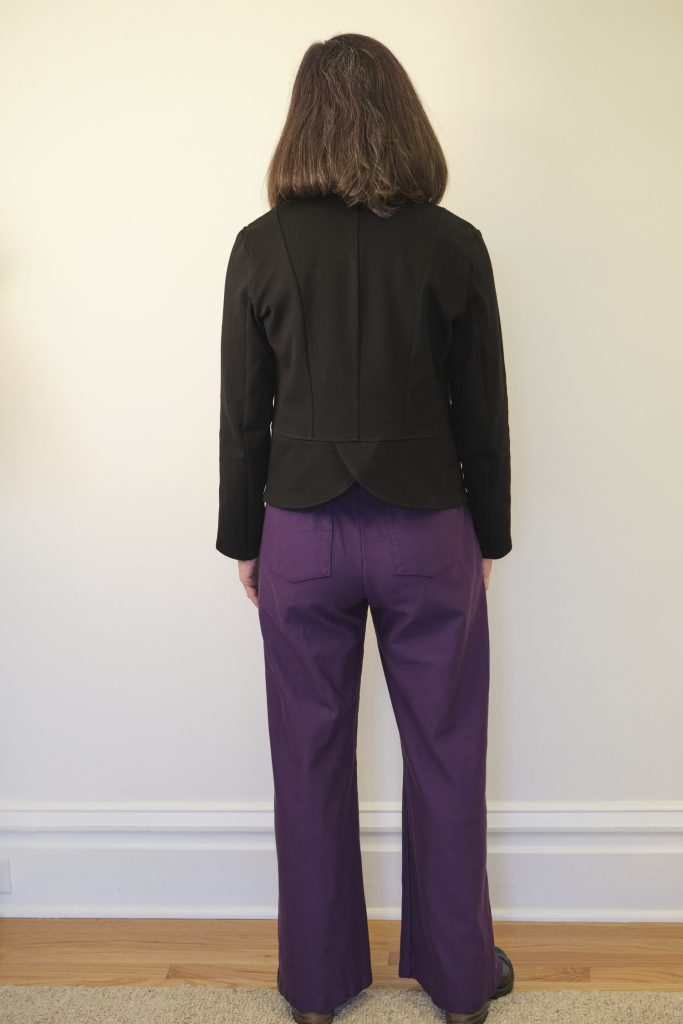It was my first time trying the Pattern Emporium Wanderlust fit and flare dress pattern, and I couldn’t help myself: I made three of them.
I saw some geometric poly/rayon/spandex double knit fabric on the Seweird Facebook group and had to order it immediately — I have a thing for geometric double knits, the more they look like something you might upholster a chair with, the more I want to wear them! And double knits tend to be soft, stretchy, and washable, with a nice body and weight to them, good for more structured garments but without the need for zippers. This one is a grey and red chevron knit, and I knew it needed to be a dress. I didn’t want to use a pattern I had already used with a geometric double knit (e.g. this Sinclair Alana dress or this Sinclar Valley Skater Dress with a full circle skirt) and none of the other patterns I already owned seemed quite right. I wanted a sleek fit-and-flare style with pockets and wide sleeves, but without princess seams or a waist seam. I checked out my favorite pattern companies and thought Wanderlust might work with the addition of some statement sleeves and pockets (the pattern doesn’t mention them but I found some examples in the PE Facebook group of Wanderlust dresses with pockets).
Since I had not previously used this pattern, I decided it would be a good idea to try it with some fabric I was less in love with before cutting into my new double knit. I selected a balsam green poly/spandex stretch corduroy (purchased from Surge Fabrics) from my stash. I bought it last year and found it more shiny and velour-like than I was expecting. I decided to use it for my (hopefully wearable) muslin. I cut a size 10 in knee length with a scoop neck and long sleeves, making no adjustments to the pattern except adding side seam pockets and cutting an inch off the sleeves before hemming. It was a very quick sew except for the pockets. I also found the corduroy a bit painful to press, as every time I pressed a seam it would create a press line somewhere I didn’t want it. I eventually found I could press it from the back and use a press cloth and it came out more or less ok.
I tried on the dress, and having learned about shoulder and back adjustments in my last sewing project, I looked carefully at the back and sew the folds at the waist that suggested a swayback adjustment was needed. I also noted the folds under the arm pit suggesting I might also have benefitted from a sloped-shoulder adjustment. It was too late to do the sloped-shoulder adjustment but I went ahead and machine basted in a swayback adjustment and was happy with the results so sewed that in. Now the dress has a waist seam in the back (but not the front).
I’m actually quite happy with the finished dress and wore it right away! It is super comfy and I’m glad I put in the extra time to add the pockets!
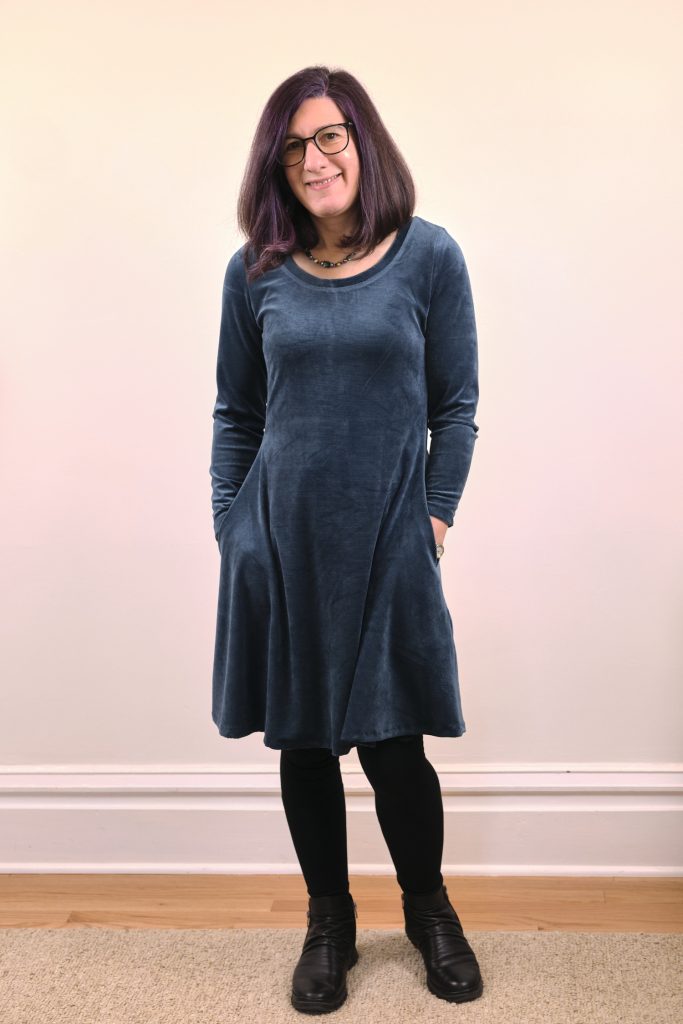
I decided this was the right pattern to use for the double-knit, but I also wanted to test the sloped-shoulder adjustment and some bell sleeves. So I decided to make another muslin, this one to be assembled quickly with no intention of wearing it. I grabbed some lightweight poly-spandex rib knit with a colorful wave pattern from my stash that I bought on clearance from Mily Mae Fabrics. I made a t-shirt from it last summer and my daughters did not approve of the print, so I figured I might as well use it for a muslin I wouldn’t actually wear. I adjusted the pattern in Affinity Designer to include the swayback and sloped shoulder adjustments. I cut out the front and back pieces at the short length. I decided to use the modern bell sleeve from the Pattern Emporium Allure Bell Sleeve Top pattern, with a long bell attached to an above-the-elbow half sleeve. I cut out one sleeve and bell. I machine-basted everything together. The fit was great and I discovered I had made (most of) the cutest little dress. I showed my husband and one of my daughters and they agreed: the dress was adorable and I really should cut out the other sleeve and properly finish it. I thought about adding pockets, but I didn’t think the stretchy rib knit would be able to support them so, reluctantly, I broke my self-imposed rule of never sewing a dress without pockets. I decided it was short enough that I could consider it a tunic and wear it with pocket leggings. I went ahead and cut out the remaining pieces and put it aside to finish after I made the double-knit dress.
So then I turned to the double-knit and realized there were a few details to be worked out. The big problem was that the fabric had about 70% stretch lengthwise but only about 40% widthwise. Normally, I would cut a dress on the length of the fabric, and given the direction of the chevrons, this was the most straight forward thing to do. But I felt the dress would work much better with the 70% stretch going around the body. Unfortunately, this would mean that all the chevrons would be pointing in the same direction around the dress, which seemed strange to me. I decided to solve the problem by adding a front center seam to the dress and turning half the front and half the back upside down so that the chevrons would point inward. I similarly cut one of the sleeves upside down so the sleeve chevrons would point in opposite directions.
I realized that my newly-created center front seam would look best if the chevrons matched exactly in the center — basically a stripe matching problem. I cut a few pieces of the fabric to test my ability to match and realized I needed some help. I read some stripe-matching tutorials and watched some videos and tried a few approaches. I liked the approach of using quarter-inch double-sided fabric tape to align the seam and then serging it in place. However, this created a bulky ridge down the center. Sewing the seam with my sewing machine with a 3/8 seam allowance (with serged edges) and pressing the seam open seemed like it was going to be a better approach, but it required carefully pinning every inch or so to get it right.
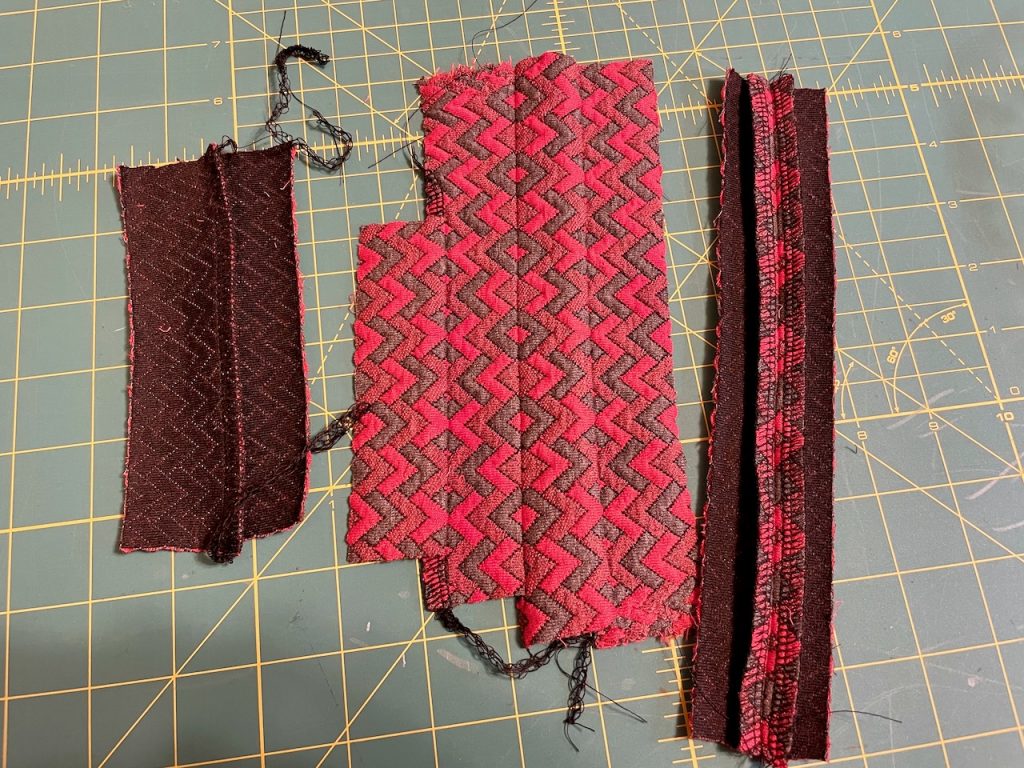
I also debated the length of the bell sleeves. On rib-knit dress I intended to leave the ends unfinished, but the double-knit did not have a smooth raw edge and also did not drape as much, so I decided to add 1.5 inches to the long-length bell (still shorter than the XL bell).
The final issue to work out was what to do about the neck band. I decided I could either cut it horizontally (with less stretch) or vertically in two pieces so I could flip one of them and have them meet in the middle. I decided to cut out the horizontal one with an extra inch of fabric due to the low strech and baste it to the dress and see if it worked.
Finally I was ready to sew! I started with the front and back center seams, loaded them up with a ton of pins, machine-basted them, checked the positioning, and then sewed them with a very shallow zigzag stitch and a 3/8-inch seam allowance. The alignment was great! Then I added the pockets, the tops of the sleeves,and sewed the main dress together. Once again, the pockets took longer than I would have liked.

Next I machine-basted on the neckband. My first attempt was ok, but seemed to be a bit too long and I realized too late was not cut entirely straight. I unbasted it, cut a new band an inch shorter and much straighter and based it on. This one worked so I serged it in place. Next I serged the sleeve bells and carefully hemmed them by serging the edge, turning under 3/8 inch, and sewing at 1/4 inch with my sewing machine. I machine-basted the sleeve bells to the sleeves and then serged them in place. Finally, I serged the hem, folded it under 3/4 inch and fused it with hem tape, and then zigzaged it in place.
I must say I’m pretty pleased with the results: the fabric, the fit, the sleeves…. THE SLEEVES!
And pockets too! I love the 60’s style made from modern fabrics and the front seam matching. The positioning of the chevrons in opposite directions worked out really well. I was so excited I almost wore the dress to work the day after I finished it, and then remembered I would have to walk 20 minutes in the below-freezing weather to get to work, so decided to wait for a bit warmer weather a couple of weeks later.
It took a few weeks before I had time, but I finally got around to finishing the accidental dress, and it is indeed super cute and it works well with my periwinkle pocket leggings. I’m not sure when it will be warm enough to wear it outside the house, but I’m ready!
Side note: I have photo studio lights now! While I love to take my fashion photos outside, it is too cold this time of year for a lot of outdoor fashion photography. We have this great off-white wall with nothing on it in the room that used to be our kids’ playroom, but the lighting in the room wasn’t great. So I bought a pair of inexpensive softbox photo lights and now I have a photo studio. Most of the photos on this page were taken with my Fuji X-T30 camera with a 35 mm lens. The last set were taken on a tripod with a self timer since my photographic assistant was unavailable.

